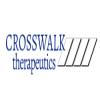Dive Brief:
- Sanofi SA is not picking up rights to Voyager Therapeutics Inc.'s lead candidate, a move that sent the clinical-stage biotech's stock tumbling after close-of-market Monday.
- Per a 2015 deal, Sanofi had the option to claim ex-U.S. rights to Voyager's VY-AADC01, a gene therapy currently in Phase 1 testing for the treatment of Parkinson's disease. A spokesperson for the French drugmaker said the company decided against exercising that option due to "strategic reasons," but did not elaborate further.
- Voyager maintained, however, that Sanofi's decision appeared to be based on a desire to have U.S. rights to VY-AADC01 rather than on concerns over the drug's efficacy. "I think Sanofi maintained a high level of interest in the data we presented publicly, and of course they've seen all the data publicly disclosed and otherwise," Voyager's CEO Steve Paul said in an Oct. 30 investor call.
Dive Insight:
Voyager shareholders clearly didn't have a positive view of Monday's news. The company's stock opened at $20.50 apiece on Tuesday, down 9.8% from the prior day's close of market.
But Sanofi's pass on ex-U.S. rights to VY-AADC01 may not be such a bad thing, according to analysts.
"At the time the original license agreement was formed, the VY-AADC-01 Parkinson’s disease program was in its preliminary stages and not as validated with clinical data as it is now," EvercoreISI's Josh Schimmer wrote in an Oct. 30 note. "Now that additional data has accrued for the program, we believe its value has increased (as reflected in the company’s market cap)."
Voyager's stock has grown close to 70% year-to-date, and the company's market cap rests at around $570 million. Helping that growth were positive Phase 1b data announced in September that, across three cohorts, showed mean putaminal AADC enzyme activity increased 13%, 56% and 79%, respectively, at six months relative to baseline for Parkinson's disease patients treated with VY-AADC-01.

Schimmer acknowledged that if the data wasn't what caused Sanofi to ditch exercising its opt-in, then something else must have changed in the company's mindset.
"It’s possible that over the past 3 years [Sanofi]’s views of the addressable EU market has shifted, although for this type of a program we don’t see how that would impact," he wrote. "It’s also possible [Sanofi] never really had conviction in the EU market opportunity to begin with, and quite probable that this program wouldn’t move the needle enough for Sanofi revenue to make it worth diverting resources."
In any case, Voyager maintains VY-AADC01's coveted U.S. rights, and is still working with Sanofi on other programs geared toward indications such as Friedrich's ataxia and Huntington's disease. The Cambridge, Massachusetts-based biotech has its eyes out for additional partnerships as well.
"As we advance our lead program for Parkinson's disease through the clinical and regulatory stages, it is critical that we lead and manage clinical development ourselves, and importantly retain commercial rights, particularly in the U.S," Paul said during the investor call.
"While we may look to partner with collaborators and academia and industry on certain technologies or geographies — especially on some of our other, unpartnered programs — we see tremendous value, as did our board, in retaining rights to our Parkinson's disease program in the U.S.," he added.
What's more, Paul noted that while it would have been nice to have Sanofi's help in establishing ex-U.S. sites for an impending Phase 2/3 trial of VY-AADC01, his company is confident it can conduct the necessary R&D and manufacturing itself.
"The amount of vector we need for this program are very, very modest because we're injecting directly into the brain at a very small volume, and we've committed to using our baculovirus/Sf9 process for producing that GMP vector for these pivotal trials," Paul said. "That is something that's advancing very nicely but is advancing completely at Voyager, so this has nothing that really involves Sanofi Genzyme at this point."
As of June 30, Voyager had $141 million in cash, equivalents and marketable debt securities. The company predicts that number will be about $90 million to $100 million by the end of 2017, though that should be enough to keep it operating into 2019, according to an Oct. 30 statement.















